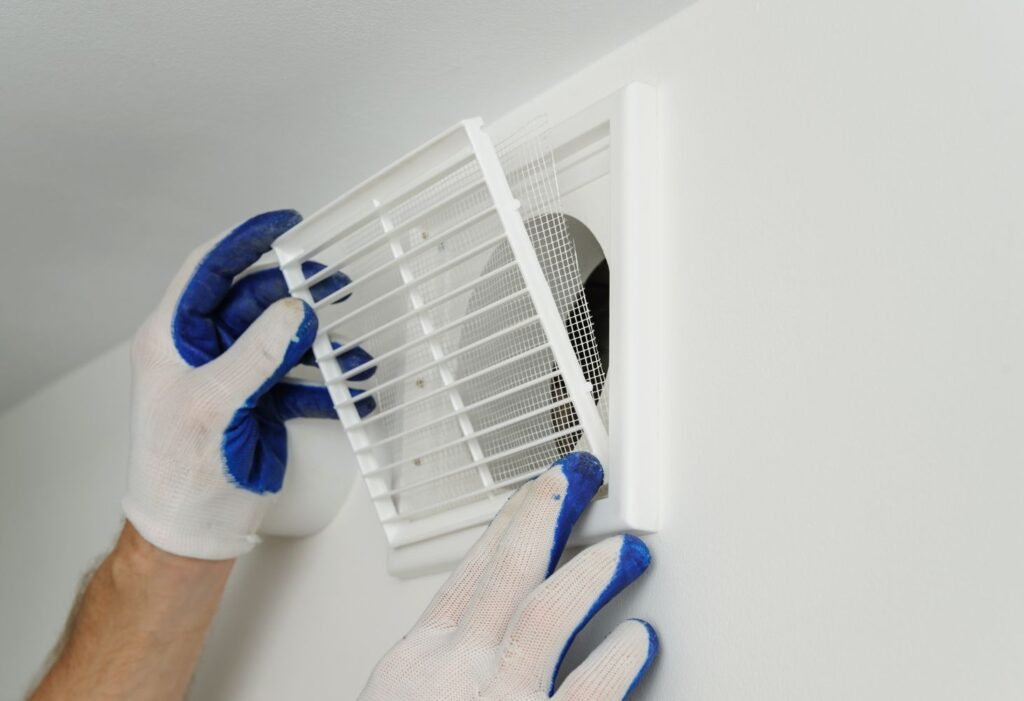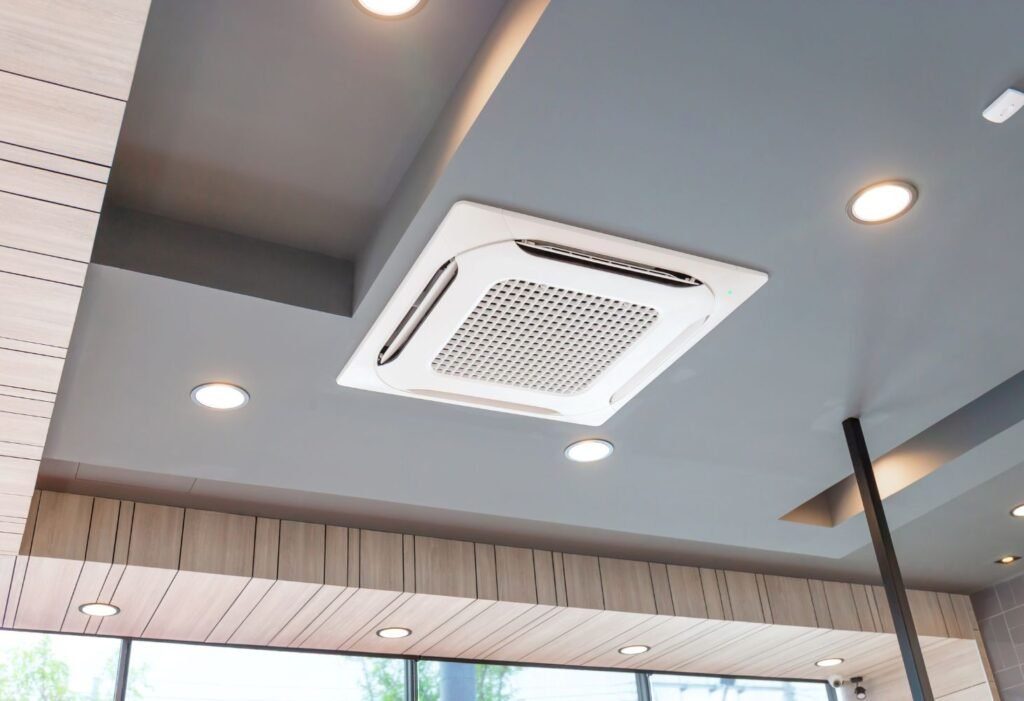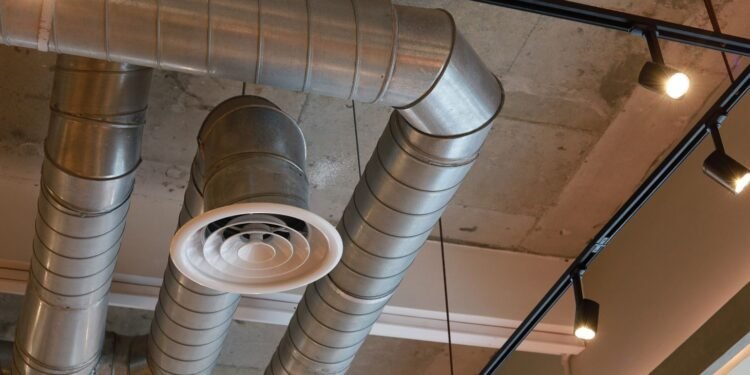Every garage owner knows that this space is not just for parking cars. It’s a workshop, a storage area, and sometimes even a place for relaxation. However, what many might not realize is the critical importance of proper garage ventilation. Without adequate ventilation, garages can accumulate harmful fumes from vehicles and lawn equipment, moisture that can lead to mold and mildew, and excessive heat which can damage stored items and make the space uncomfortable.
Ventilation issues in garages are common and can range from mild annoyances to serious health risks. Issues such as built-up exhaust, paint fumes, or even just the stale air from closed, unused spaces can turn your garage into an unsafe environment. Proper ventilation solves these problems by cycling out old, contaminated air and replacing it with fresh, clean air, making your garage a safer and more pleasant part of your home.
Understanding Garage Ventilation Requirements

Before diving into the various ventilation options available, it’s essential to understand the legal and practical requirements for garage ventilation. Most local building codes will have specific standards that must be adhered to, particularly in residential areas. These regulations often specify the minimum ventilation necessary to ensure safety from automobile emissions and other hazardous chemicals.
For attached garages, the need for adequate ventilation becomes even more critical. Fumes from your garage can seep into living areas if not properly vented, posing health risks to your family. Detached garages, while slightly less concerning regarding fume migration to living spaces, still need sufficient ventilation to handle chemicals and moisture effectively.
Types of Garage Ventilation Systems
Garage Ventilation Fans
The cornerstone of effective garage ventilation is the use of ventilation fans. These fans are designed to remove stale air from inside the garage and replace it with fresh air from outside, creating a continuous air exchange. There are two main types of ventilation fans:
- Exhaust Fans: These are installed on the walls or ceiling and work by sucking out the polluted air from the garage.
- Intake Fans: Less common than exhaust fans, intake fans help by pushing external air into the garage, aiding in creating a balanced airflow.
When selecting a fan, consider factors such as the size of your garage and the volume of air the fan can move, typically measured in cubic feet per minute (CFM). Some of the best models on the market offer features like automatic humidity sensors, timers, and variable speed controls, which can enhance the efficiency of your ventilation system.
DIY Garage Ventilation Solutions

For the hands-on homeowner, setting up a basic DIY garage ventilation system can be a satisfying project. Here’s a simple step-by-step guide to help you get started:
- Identify Ventilation Points: Determine where your intake and exhaust points will be. A common setup involves placing the exhaust fan high on one wall and the intake vent on the opposite wall at a lower point to facilitate natural air flow.
- Choose Your Fans: Based on the size of your garage and the required CFM rating, select appropriate fans that fit your needs.
- Installation: Install the exhaust fan in the designated spot, ensuring it’s securely mounted and that there’s an external vent to allow air to escape outside. Repeat the process for the intake vent or fan.
- Sealing and Insulation: Make sure that all windows and doors are well-sealed when closed to prevent air leaks. Proper insulation helps maintain temperature control and efficiency.
- Testing and Maintenance: Once installed, test the system to ensure that it effectively moves air from inside to outside. Regular maintenance is needed to keep the system working efficiently, such as cleaning the fans and checking for obstructions.
Advanced Garage Ventilation Systems
For those looking for a more sophisticated solution, advanced garage ventilation systems with automated controls might be the answer. These systems often include:
- Humidity and Temperature Sensors: These automate the operation of fans based on preset humidity and temperature levels, ensuring that your garage maintains a constant environment without manual intervention.
- CO2 Detectors: Some systems come equipped with carbon dioxide detectors, automatically activating the ventilation system when CO2 levels rise above a safe threshold.
- Smart Controls: Integration with home automation systems can allow you to control and monitor your garage environment from your smartphone or other devices, offering convenience and peace of mind.

Innovative Garage Ventilation Ideas
Passive Garage Ventilation Techniques
Passive ventilation systems are a cost-effective way to enhance airflow without relying on mechanical solutions. These systems work by utilizing natural air movements to circulate fresh air throughout your garage. Here’s how you can leverage passive ventilation:
- Vent Placement and Natural Airflow Design: Strategic placement of vents can greatly improve the efficiency of passive airflow. Ideally, vents should be placed on opposite walls at varying heights—lower vents for cool air intake and higher vents to allow warm air to escape. This setup utilizes the natural behavior of warm air rising to facilitate continuous air movement.
- Utilizing Windows and Doors for Improved Air Quality: Simply opening windows and doors can significantly contribute to your garage’s ventilation. Consider adding screened windows or vents in garage doors to secure the space while allowing air to circulate freely.
Creative Use of Plants and Natural Solutions
Plants are not only great for beautifying a space but can also improve indoor air quality. Some plants are particularly effective at absorbing pollutants and moisture, which can help in maintaining cleaner air in your garage. Placing moisture-absorbing plants such as ferns and palms, or air-purifying ones like spider plants and snake plants, can contribute to a healthier garage environment.
Addressing Common Garage Ventilation Problems

Garages often face specific challenges such as moisture accumulation, dust, and fumes, all of which can be mitigated with proper ventilation strategies.
How to Deal with Moisture and Condensation
Moisture in a garage can lead to serious issues like mold growth and rust. To combat this:
- Enhance Air Circulation: Use exhaust fans to remove damp air from the space and intake vents to draw in dry air.
- Use Dehumidifiers: In regions with high humidity, supplemental dehumidifiers can help maintain drier conditions.
- Insulate Water Pipes: Prevent condensation by insulating any exposed pipes and ensuring that cold surfaces are covered to reduce moisture accumulation.
Solutions for Minimizing Dust and Fumes
Workshops in garages often produce a lot of dust and chemical fumes, which are hazardous to breathe in. Here are some effective ways to minimize these pollutants:
- Dust Collection Systems: Install dust collectors or vacuum systems in areas where woodworking or sanding takes place.
- Proper Storage of Chemicals: Keep paints, solvents, and fuels in sealed containers and ensure they are stored in well-ventilated areas, possibly with local exhaust ventilation to remove fumes directly from their source.
Tips for Maintaining Air Quality in a Workshop Setting
Maintaining high air quality in a garage workshop involves vigilance and regular maintenance:
- Regular Cleaning: Keep the floors and surfaces clean to reduce dust and chemical residue buildup.
- Air Filtration Systems: Consider installing air filtration systems that can trap fine dust particles and circulate clean air back into the garage.
- Routine Vent Maintenance: Regularly check and maintain ventilation systems to ensure they are not obstructed and are running efficiently.
Conclusion
Improving your garage’s ventilation can significantly enhance its usability and safety. From passive techniques that leverage natural airflow to more sophisticated systems that control humidity and filter out pollutants, there are numerous options to suit different needs and budgets. Remember, the key is to assess your specific garage needs and configurations to tailor the solutions that best fit your space. By implementing the right ventilation strategies, you can transform your garage into a fresher, safer, and more pleasant environment. Whether you choose a DIY project or a professional installation, upgrading your garage ventilation is a worthwhile investment in the health of your home and family.
What is the best way to ventilate a garage?
The best way to ventilate a garage depends on its use and structure, but generally, a combination of exhaust fans to remove stale air and intake vents to bring in fresh air is highly effective. For those with a DIY interest, installing a simple exhaust fan system near the ceiling can significantly improve air circulation.
Does a garage need to be vented?
Yes, garages need to be vented to prevent the buildup of harmful gases from vehicles, chemicals, and tools, which can pose health risks and create unpleasant odors. Ventilation also helps control moisture, which can prevent mold growth and structural damage.
How do I air out my garage?
To air out your garage, start by ensuring it has adequate ventilation through either mechanical or passive means. Open any doors and windows to create a cross breeze. You can also use a box fan in front of an open garage door to help push out stale air and pull in fresh air.
How do I vent moisture from my garage?
Venting moisture from your garage involves a combination of good ventilation and moisture control strategies. Installing an exhaust fan can help remove moist air. Additionally, using dehumidifiers and ensuring that the garage is properly sealed from the elements can prevent moisture accumulation.
How can I improve ventilation in my attached garage?
Improving ventilation in an attached garage is crucial to prevent any fumes or chemicals from entering the living areas of the home. Installing an exhaust fan system that vents to the outdoors is typically recommended. Additionally, consider adding vents or upgrading the door seals to ensure that there is no airflow into the house and that the garage has sufficient outside air intake.


